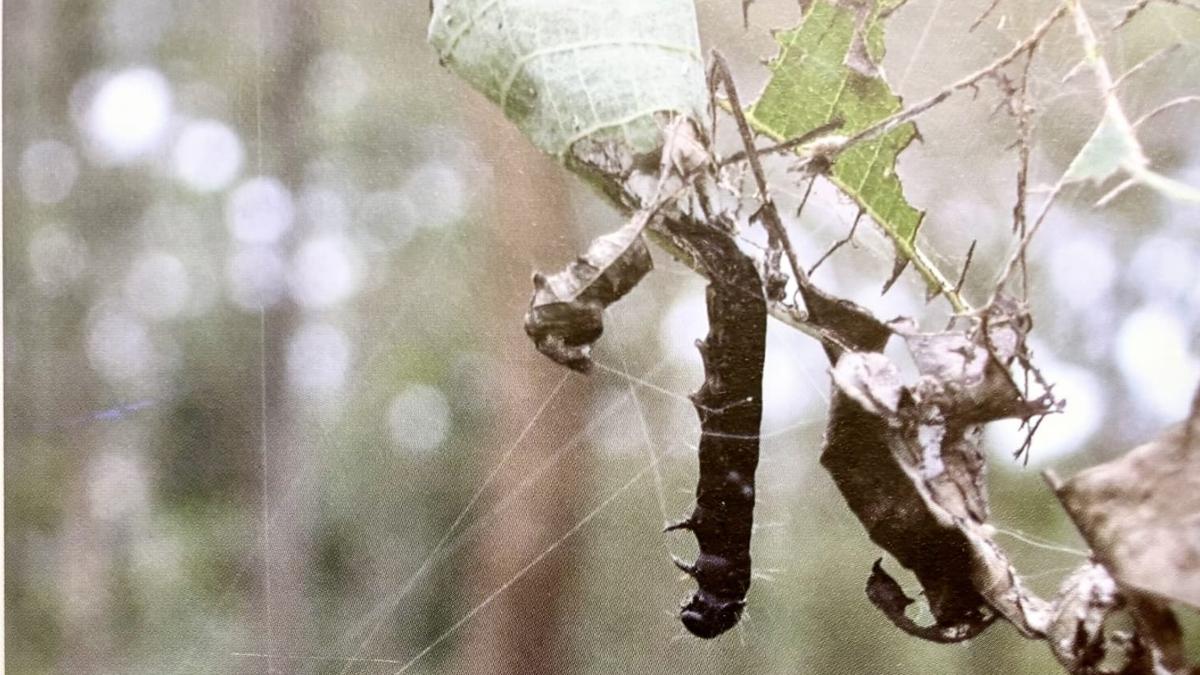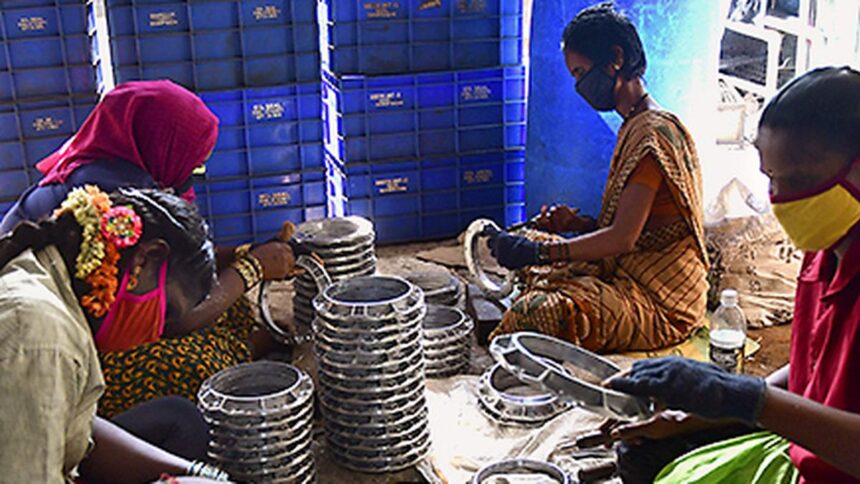
Teak defoliator larva (Hyblaea puera) killed using HpNPV
| Photo Credit: special arrangement
A revolutionary technology developed by the Kerala Forest Research Institute (KFRI) is set to transform the way teak plantations are protected from their most notorious pest – the teak defoliator moth (Hyblaea puera). The institute has successfully identified, mass-produced and patented a naturally occurring virus, Hyblaea puera Nucleopolyhedrosis Virus (HpNPV), which causes lethal infection in the pest larvae and prevents widespread defoliation of teak trees.
For decades, the teak defoliator has wreaked havoc in plantations, stripping entire forests of their foliage up to six times a year, weakening trees and causing significant loss in timber yield. “When the larvae attack, the tree spends its energy regenerating leaves instead of growing. It’s a huge invisible loss,” explains T.V. Sajeev, Principal Scientist at KFRI.
Conventional control methods such as aerial spraying of chemical pesticides were tried — at Konni in Kerala and Barnavappara in Madhya Pradesh — inviting protests due to environmental concerns. The KFRI even presented a paper at the 1980 Forestry Conference at Dehradun titled ‘The problem of teak defoliator: to spray or not to spray?’
Economic loss
KFRI’s sustained research showed that the economic loss due to teak defoliators is staggering: an estimated 3 cubic metres of wood per hectare annually, translating to ₹562.5 crore loss in Kerala and ₹12,525 crore in India. The institute screened the pest’s natural enemies and zeroed in on HpNPV, a virus that is entirely host-specific, targeting only the teak defoliator larvae, and thus completely safe for the forest ecosystem.
“The beauty of the virus is in how it works,” said Mr. Sajeev. “It multiplies at least a trillion times inside a single larva. When the body breaks open, it releases huge quantities of inoculum. Even if the infection is sub-lethal, the virus stays in the insect, gets passed on to the next generation, and proves lethal then.”
With a clear understanding of the pest’s life cycle, HpNPV can be applied during early-stage outbreaks to prevent larger infestations.
Field trials at Nilambur in Malappuram, seen as India’s cradle of teak, were a success. KFRI has already transferred the know-how for outbreak monitoring and virus application to the Forest department. “Now it’s up to the department to formally adopt the technology,” said Mr. Sajeev.
Export potential
What makes this innovation more significant is that many of the 64 countries now cultivating teak — from its native range of just four (India, Myanmar, Laos, Thailand) — have banned chemical pesticide use. This opens up a massive export potential for the eco-friendly HpNPV technology.
KFRI will showcase the HpNPV solution at the Kerala State Council for Science, Technology and Environment (KSCSTE) R&D Summit 2025, to be held on August 7 in Thiruvananthapuram, positioning it as a scalable, sustainable model for forestry management across the globe.
Published – August 06, 2025 01:20 pm IST






















